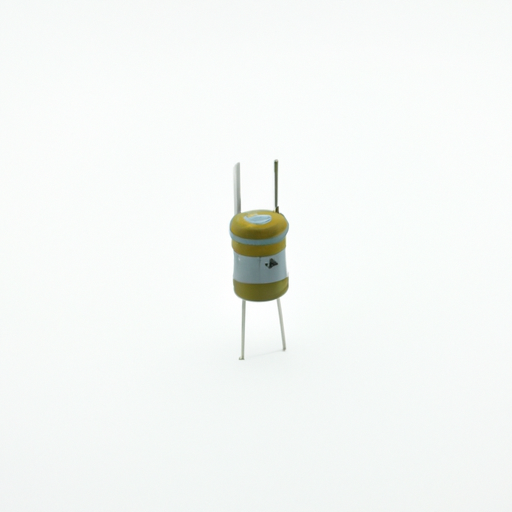What is the Function of the Latest Capacitor? What is the Purchase Price?
I. Introduction
Capacitors are fundamental components in modern electronics, playing a crucial role in energy storage, signal processing, and power management. As technology advances, so do capacitors, leading to innovations that enhance their performance and applications. This blog post will explore the function of the latest capacitors, their advancements, and the factors influencing their purchase price.
II. Understanding Capacitors
A. Basic Principles of Capacitance
At its core, a capacitor is a device that stores electrical energy in an electric field. The ability of a capacitor to store charge is quantified by its capacitance, measured in farads (F). When a voltage is applied across the capacitor's terminals, it accumulates charge, which can be released when needed. This process of storing and releasing energy is essential in various electronic applications.
B. Types of Capacitors
Capacitors come in various types, each suited for specific applications:
1. **Electrolytic Capacitors**: Known for their high capacitance values, these capacitors are often used in power supply circuits.
2. **Ceramic Capacitors**: These are widely used in high-frequency applications due to their stability and low losses.
3. **Film Capacitors**: Known for their reliability and low self-inductance, film capacitors are used in audio and power applications.
4. **Tantalum Capacitors**: These capacitors offer high capacitance in a small package, making them ideal for compact devices.
5. **Supercapacitors**: Also known as ultracapacitors, they provide high energy density and are used in applications requiring rapid charge and discharge cycles.
C. Applications of Capacitors in Various Industries
Capacitors are ubiquitous in electronics, finding applications in consumer devices, automotive systems, renewable energy technologies, and industrial machinery. They are essential for smoothing out voltage fluctuations, filtering signals, and providing backup power.
III. Latest Advancements in Capacitor Technology
A. Introduction to the Latest Capacitor Models
Recent advancements in capacitor technology have led to the development of new models that offer enhanced performance. Key manufacturers, such as Panasonic, Vishay, and KEMET, have introduced innovative designs that push the boundaries of capacitance, voltage ratings, and size.
B. Enhanced Performance Characteristics
The latest capacitors boast several improved characteristics:
1. **Increased Energy Density**: New materials and designs have allowed for higher energy storage in smaller packages, making them ideal for portable devices and electric vehicles.
2. **Improved Charge/Discharge Rates**: Advancements in manufacturing processes have resulted in capacitors that can charge and discharge more quickly, which is crucial for applications like regenerative braking in electric vehicles.
3. **Greater Lifespan and Reliability**: Enhanced materials and construction techniques have led to capacitors that can withstand harsher conditions and last longer, reducing the need for replacements.
C. Environmental Considerations
With growing concerns about sustainability, manufacturers are developing eco-friendly capacitors. These innovations aim to reduce the environmental impact of capacitor production and disposal, aligning with global efforts to promote greener technologies.
IV. Function of the Latest Capacitors
A. Energy Storage and Management
The latest capacitors play a vital role in energy storage and management systems. In renewable energy applications, such as solar and wind power, capacitors help stabilize the energy output by storing excess energy and releasing it when needed. In electric vehicles, they are used to manage energy flow, enhancing efficiency and performance.
B. Signal Processing and Filtering
Capacitors are essential in communication devices, where they filter out noise and stabilize signals. In audio and video equipment, they help maintain signal integrity, ensuring high-quality sound and image reproduction.
C. Power Supply Stabilization
In power electronics, capacitors stabilize voltage levels, preventing fluctuations that could damage sensitive components. They are also crucial in consumer electronics, where they ensure smooth operation and reliability.
V. Purchase Price of Latest Capacitors
A. Factors Influencing the Price of Capacitors
Several factors influence the price of capacitors:
1. **Material Costs**: The type of materials used in capacitor construction significantly affects pricing. High-quality materials often lead to higher costs.
2. **Manufacturing Processes**: Advanced manufacturing techniques can increase production costs, which may be reflected in the final price.
3. **Market Demand and Supply**: Fluctuations in demand for specific capacitor types can lead to price changes, especially in rapidly growing sectors like electric vehicles and renewable energy.
B. Price Range of the Latest Capacitor Models
The price of the latest capacitor models varies widely based on type and specifications. For example:
Electrolytic Capacitors: Prices can range from $0.10 to $5.00, depending on capacitance and voltage ratings.
Ceramic Capacitors: These typically range from $0.01 to $1.00, with higher prices for specialized types.
Supercapacitors: Prices can range from $1.00 to $50.00, depending on energy density and application.
C. Cost-Benefit Analysis for Consumers and Businesses
When considering the purchase of the latest capacitors, consumers and businesses should conduct a cost-benefit analysis. While the initial investment may be higher for advanced capacitors, the long-term savings from improved performance, reliability, and energy efficiency can outweigh the upfront costs. Additionally, the value of enhanced features, such as faster charge/discharge rates and greater lifespan, can lead to significant operational benefits.
VI. Conclusion
In summary, the latest capacitors are integral to modern electronics, offering enhanced performance and versatility across various applications. As technology continues to evolve, we can expect further advancements in capacitor design and functionality. The importance of capacitors in energy management, signal processing, and power stabilization cannot be overstated, making them a critical component in the drive toward more efficient and sustainable electronic systems.
As we look to the future, trends such as miniaturization, increased energy density, and eco-friendly materials will shape the next generation of capacitors. Understanding the functions and pricing of these components is essential for consumers and businesses alike, ensuring informed decisions in an ever-evolving technological landscape.
VII. References
1. Academic journals and articles on capacitor technology and applications.
2. Industry reports and white papers detailing advancements in capacitor manufacturing.
3. Manufacturer websites and product catalogs for the latest capacitor models and pricing information.
By staying informed about the latest developments in capacitor technology, readers can better appreciate the role these components play in shaping the future of electronics.






